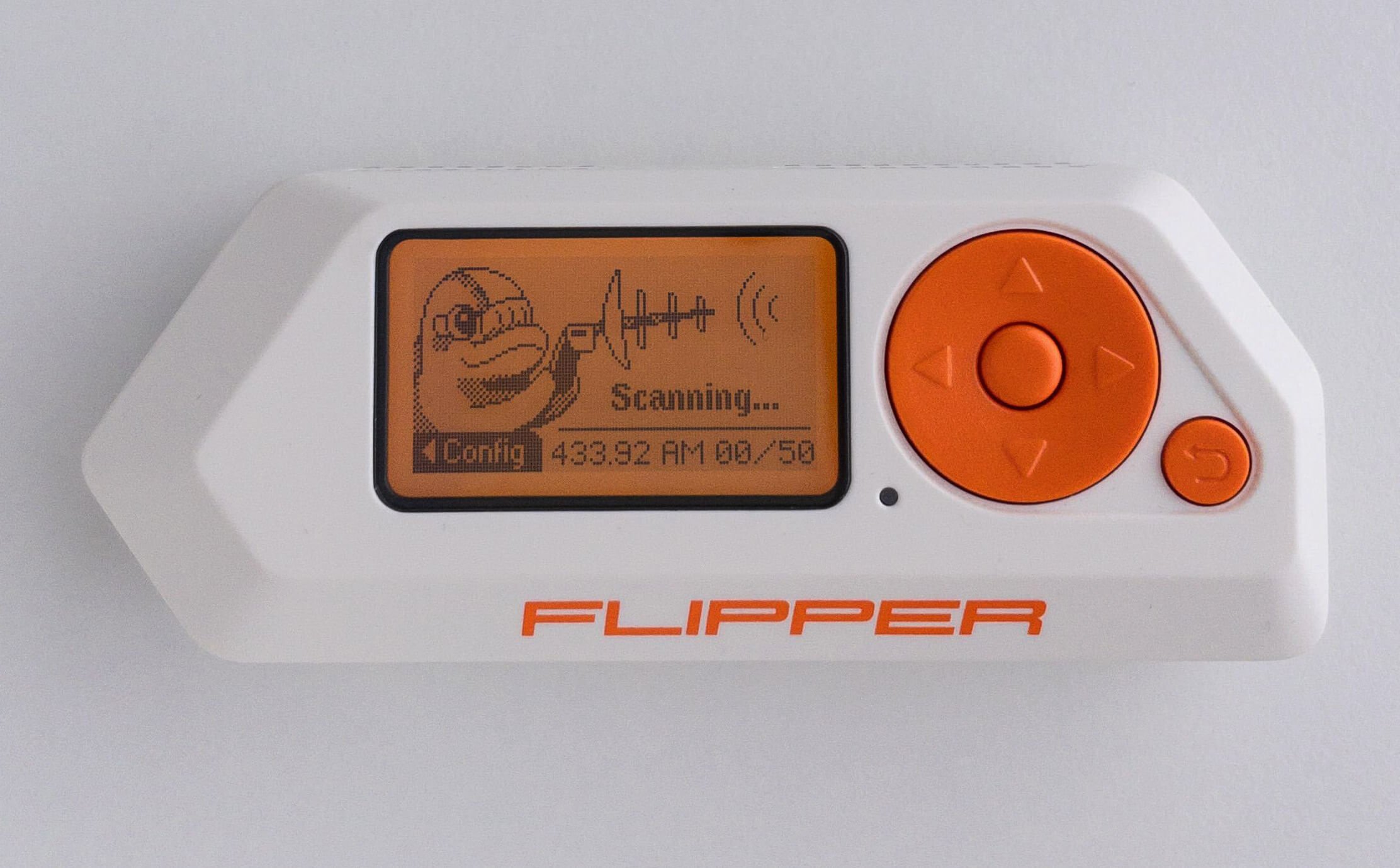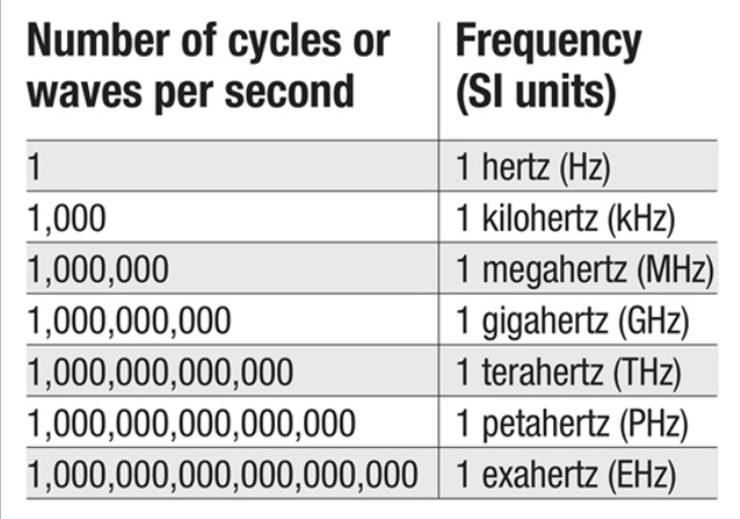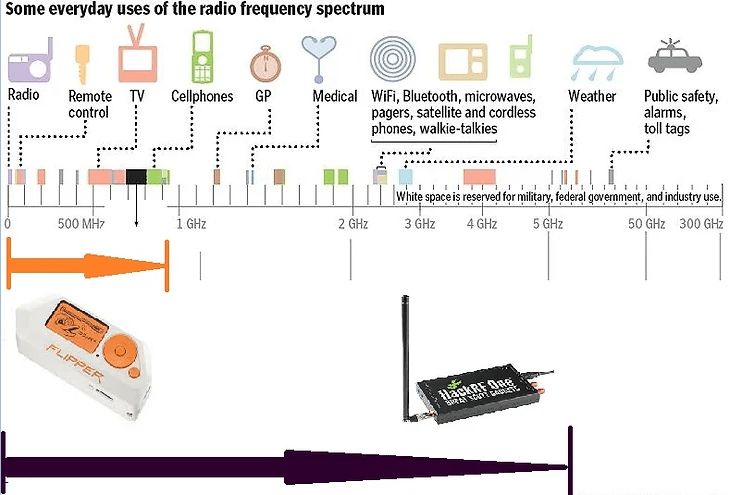As you already know, radio hacking is the spearhead of cyber security! So many things in our digital lives operate on radio signals such as,
Mobile devices
Drones
Wi-Fi
Bluetooth
Near Field Payment Systems (NFC)
Automobile Key Fobs
Remote Control Systems such as home security
RFID
Satellite Signals
GPS and more.
The goal of this series of guides is to use inexpensive hardware and free software to exploit a variety of radio signals to demonstrate the vulnerability of these devices and technologies.

This article is intended for those who are not familiar with basic Radio terminology and its meanings. For those of you familiar, consider this a repeat. My purpose here is to give you the basic concepts that will allow you to enter the exciting world of Radio Hacking!
Electromagnetic radiation
At the risk of stating the obvious, we all use radio signals in our daily lives.
Radio communication is so ubiquitous and commonplace in the 21st century that many of us forget how important it is. When I say radio, I often think of the music player in our cars and trucks, but radio signals are used for so much more. I will try to start with the basics and build from there so that one does not lose sight of the fundamentals that are critical when hacking these signals.
How does Radio work? You probably learned somewhere in high school physics that when a voltage is applied to two metal plates, an electric field is created. When current then flows through the wire, a magnetic field is created (an electric field is the force around a charged particle, while a magnetic field is the force exerted by a magnetic pole on a magnetic material). A changing electric field can produce a magnetic field. Radio is the result of how these electric and magnetic fields interact.
A change in current in a wire produces a changing magnetic field. A wire in a changing field produces a voltage. A changing current in a wire will cause a changing magnetic field. This will cause a changing electric field perpendicular to the magnetic field. Note that in each case, it is the change that causes these fields to develop (hence, as you know, an electric generator must always be moving to generate electricity). The constant motion causes the electrons to move inside the wire. The movement of this field is called an electromagnetic wave.
These electromagnetic waves have the same properties as light. Actually, light is a visible electromagnetic wave! We already understand that light can be reflected, refracted, refracted, absorbed and filtered and so can our electromagnetic waves. This makes understanding electromagnetic waves a little easier.
As mentioned above, it is the changes over time that set these fields in motion. A stream can take many forms, but the most common form looks like the one below.

Frequency
This shape is referred to as a sinusoid (no, it has nothing to do with the nose or sinuses). This form or waveform is used in most practical systems. This type of signal is said to have a frequency, or the number of times it completes a cycle (think of it like a bicycle. A cycle is each time the pedal returns to the same position. The frequency is the time it takes the foot and the pedal to return to the same position). Since electromagnetic waves travel with speed of light (186.000 miles per second), this cycle is measured in fractions of a second, or how many cycles per second.
Frequencies are expressed in Hertz. One cycle per second is one Hertz. From then on, the industry and science they use the familiar Greek endings for thousands (kilo), million (mega), billion (giga) and trillion (tera).
So 1000 cycles per second is 1 kilohertz, 1 million cycles is 1 megahertz, and 1 billion cycles is 1 gigahertz. For our purposes here, the range of frequencies between about 1 MHZ (1.000.000) to about 6GHZ (6.000.000.000.000) is where we will focus our attention.

Frequency is very important in understanding how signals propagate from one place to another.
The frequency of the wave will determine how it interacts with objects along its route. As we will see, lower frequencies can bend and refract around objects better than higher frequencies.
The frequency of a radio signal is important for several reasons.
First, determines the range of the signal. Lower frequencies have longer wavelengths, which can travel farther through the atmosphere. This is why AM radio stations, which typically use frequencies in the 530-1700 kHz range, have a longer range than FM radio stations, which typically use frequencies in the 88-108 MHz range.
Second, the frequency determines the amount of data that can be transmitted via a radio signal. Higher frequencies can carry more data than lower frequencies. This is why cellular networks, which use very high frequencies in the 1,7-2,2 GHz range, can transmit more data than traditional AM or FM radio stations.

Thirdly, the frequency determines how radio waves interact with the environment. Lower frequencies can penetrate walls and other objects, while higher frequencies are more likely to be reflected or absorbed. This is why radio waves are used for applications such as weather forecasting and air traffic control, where it is important to be able to penetrate objects.
Generally, radio signals are described in terms of frequency. Different frequencies are intended and used for different purposes, so as we described above, Wi-Fi and Bluetooth operate at 2,5 ghz (as does your microwave), while your cell phone operates on multiple frequencies between 700Mhz to 2,3, 315 GHz. Car key dongles operate on 433,9Mhz (US and Japan) and 1090Mhz (Europe). Aircraft ADS-B signals (communication of GPS coordinates, speed and altitude) operate on XNUMX Mhz.
While we will look at interception, reproduction, jamming and tampering of signals in this range at this stage, it is important to understand which SDR devices are capable of operating in these ranges. Below is a table of the most common SDR devices and their specifications.

It is not on this list Zero pinball machine. It only works at frequencies below 1GHZ. This means that it cannot work (without modifications) on Wi-Fi, Bluetooth, aircraft ADS-B or most cellular signal frequencies. The Ettus and HackRF One have the widest frequency bands and can receive and transmit on most of the frequencies we will use here. The Lime SDR it has two transmitter and two receiver channels, making it more suitable for high-performance applications.
In summary, frequency is an important parameter for radio signals. It determines the range, data capacity and interaction with the environment of a radio signal. The choice of frequency depends on the specific application for which the radio signal is being used.

Wave length
The wavelength of a wave is the distance the wave travels during one cycle. The wavelength can be determined by dividing the speed of the signal (speed of light) by the frequency of the signal. So if we have a signal with a frequency of 2,5Ghz (WiFi), the wavelength will be the speed of light (300.000.000 meters per second) divided by the frequency (2.500.000.000 cycles per second. This means that the wavelength of a Wi-Fi signal is 0,12 meters.
300,000,000/2,500,000,000 = .12m
This is how far the wave travels during one cycle.
Since the speed of light is constant (you remember this from high school physics), any radio signal can be described by either frequency or wavelength.
In general, in this branch radio signals are described by their frequency (they could just as easily be described by their wavelength). Various frequencies are reserved and used for various purposes. As we described above, Wi-Fi and Bluetooth operate at 2,5ghz (as does your microwave), while your cell phone operates on multiple frequencies from 700Mhz to 2,3Ghz. Car key dongles operate on 315Mhz and 433.9Mhz. Aircraft ADS-B (which transmits GPS coordinates, speed and altitude) operates on 1090 Mhz.
Summary
To become an experienced Radio Hackers, you need to understand some basic concepts of radio waves. In this first of a series of Radio Basics, we've tried to understand the basics of electromagnetic radiation, frequency and wavelength.



